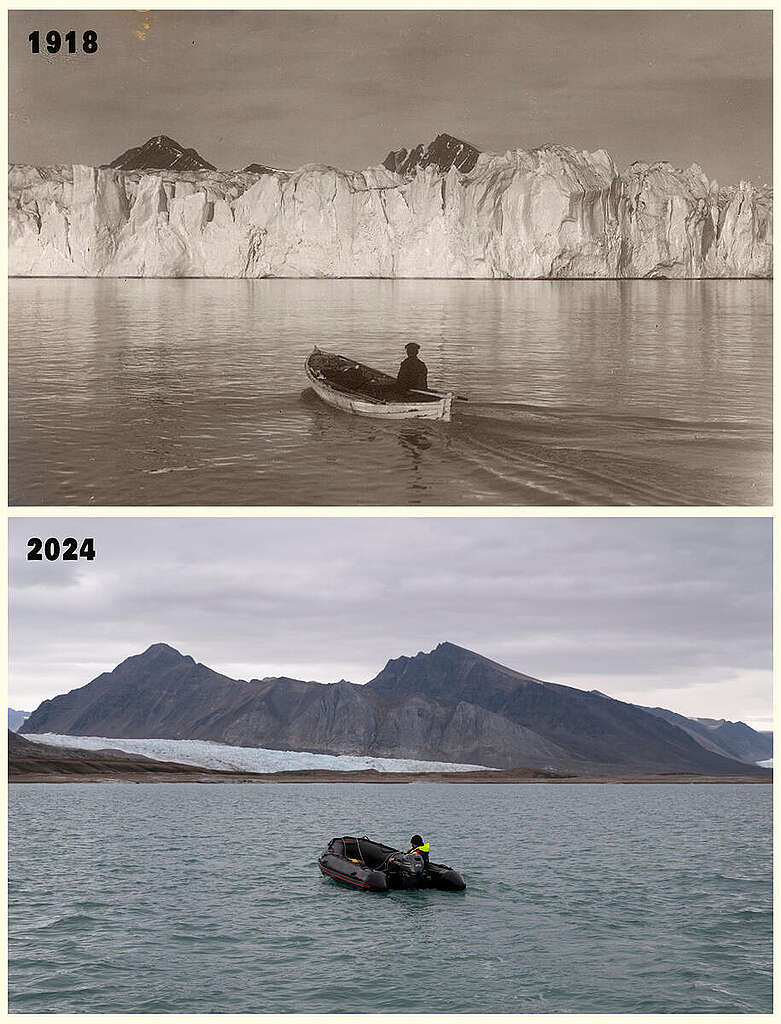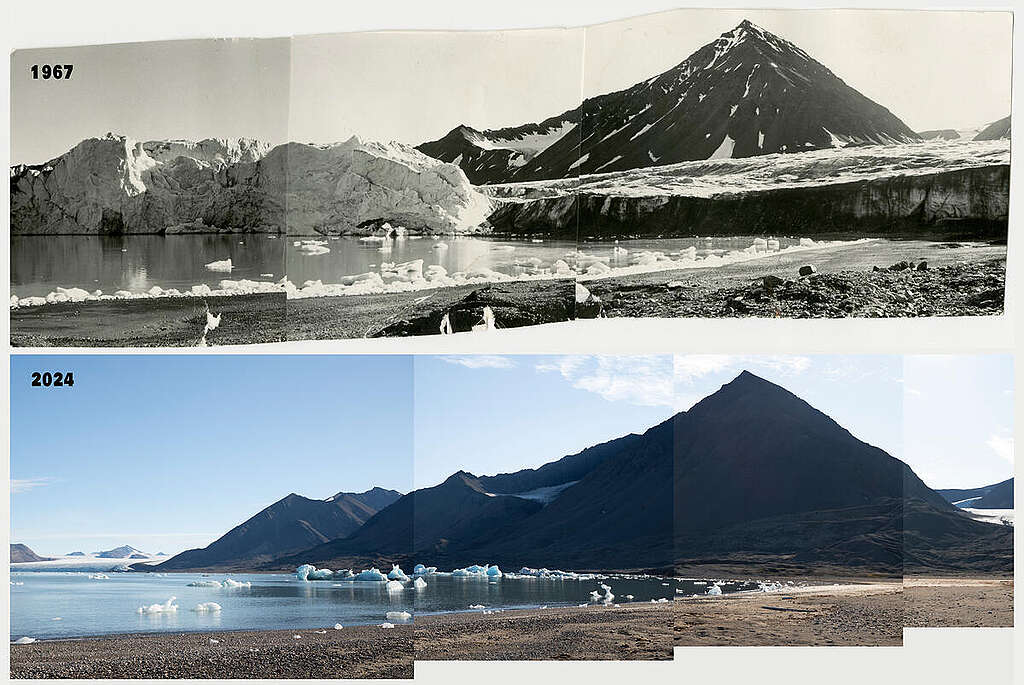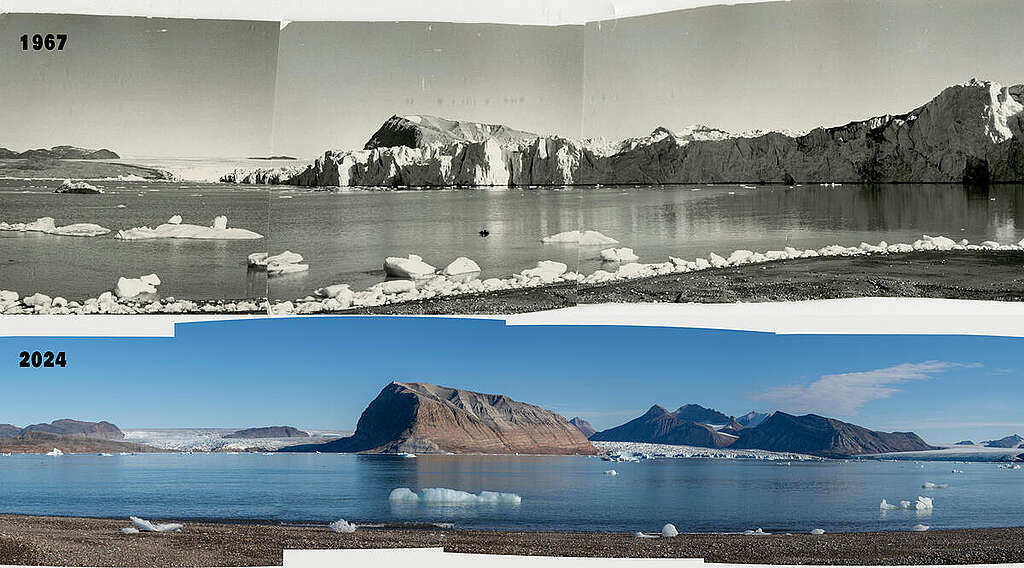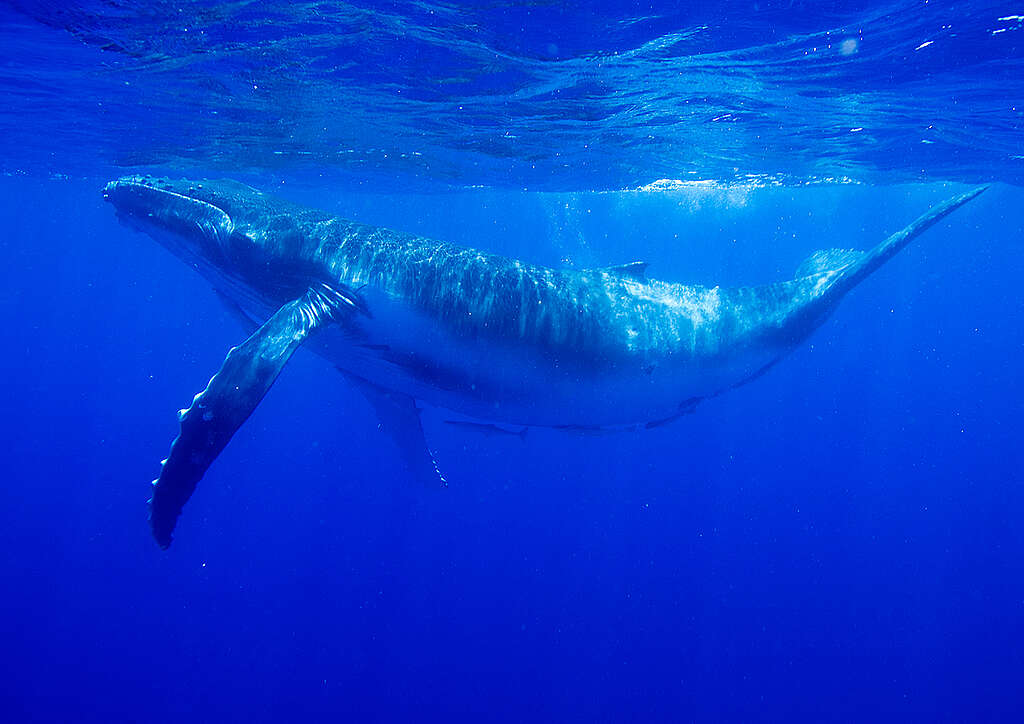Svalbard, Norway – Shocking images released by Greenpeace today illustrate the terrifying extent to which Arctic glaciers have retreated in the last century.
The images follow up on an iconic photo series by renowned Swedish photographer Christian Åslund, who twenty years ago released a photo that is still being shared in the current day.

Top: Archive image from Kongsfjorden with the glacier Blomstrandbreen in the background in 1918.
Bottom: taken in the same location by photographer Christian Aslund. 27th August 2024.
Greenpeace has commissioned photographer Christian Aslund to continue a project he began in 2002 – to carry out visual research of glaciers in Svalbard and document their retreat over time. While sailing aboard the Greenpeace vessel ‘Witness’, Aslund revisited glaciers he first documented in 2002 as well as photographing others, new to this project.
The project involved recreating 20th century photos from the Norwegian Polar Institutes archive, revealing the extent to which the ice has retreated: where there once were vast glacier walls, there is now just soil and water without any ice..

Top: Panorama image from the Norwegian polar institute archive, taken in 1967.
Bottom: Panorama taken 24th August 2024.
© Christian Åslund /Norwegian Polar Institute / Greenpeace
The photographer, Christian Åslund, says the photos “illustrate just how quickly our planet is changing as the climate crisis worsens. The Arctic is our climate sentinel – it’s where the climate and ocean crises converge, and where the impacts of these crises are seen first and felt most keenly.”

Top: Historical panorama image from the Norwegian Polar Institute from 1967, shows the glaciers Kongsbreen and Kronobreen merging and surrounding Collethøgda Island, outside Ny Ålesund, Svalbard.
Bottom: Panorama image taken from the same position by photographer Christian Aslund on the 24th August 2024.
Rapid warming of the Arctic region has global consequences. Melting glaciers and ice sheets are causing sea levels to rise while melting sea ice reveals dark ocean that absorbs heat instead of reflecting it like ice and snow and has far-reaching impacts on weather patterns. The climate and ocean crises are interconnected. As the climate crisis accelerates, the ocean’s ability to protect against its worst impacts, sustain coastal communities and support marine ecosystems is being damaged at an unprecedented scale.
Dr Laura Meller, Project Lead of Greenpeace Nordic, says, “Svalbard’s glaciers are now ghosts, haunting the Arctic. Even if as a scientist I know the terrible facts about the Arctic warming, seeing these pictures is always heartbreaking. Here, at the top of the world, we can hear an alarm from our planet, and can see laid bare before our eyes the fundamentally connected futures of oceans and our climate. Stopping climate breakdown goes hand in hand with ocean protection to create space for ocean life to recover, thrive and help us avoid the worst impacts of warming.”
The Arctic region is warming more than twice as fast as the rest of the world, and signs that the region is suffering severely from the climate crisis are accelerating, with numbers reaching record levels1.
Alongside the rapid phase-out of fossil fuels, ocean protection is critical.
Protecting the ocean means stopping destruction and damage from current threats like bottom trawling and emerging threats like deep sea mining, and protecting 30% of the world’s oceans by 2030 in a network of ocean sanctuaries.
Greenpeace is calling on governments to ratify the UN Ocean Treaty by June 2025 so that creating ocean sanctuaries in the high seas can begin. Governments must also agree to a moratorium on the dangerous deep sea mining industry.

Call on the Foreign Affairs Minister Winston Peters to create new global ocean sanctuaries and protect our blue planet.
Sign the petitionReferences
- Data from the Norwegian Centre for Data Service show that four observation stations in Svalbard recorded record-high average summer temperatures, with anomalies up to 3.0°C above normal.
- Glaciers in Svalbard have been losing mass over the past decades, concurrent with a persistent decline in glaciers globally, due to climate change.
- Globally most glaciers have been shrinking since mid-1800s with an increase in the declining trend since 1970s. Across the Arctic region, glaciers are in many places smaller than they have been in thousands of years.
- According to the National Snow and Ice Data Center (NSIDC), satellite monitoring has provided insight to the Arctic sea ice extent for 46 years. Over this period, the Arctic sea ice minimum has been in clear decline, with the 18 lowest sea ice minimums recorded in the last 18 years. The 2024 Arctic sea ice minimum was the seventh lowest on record.





